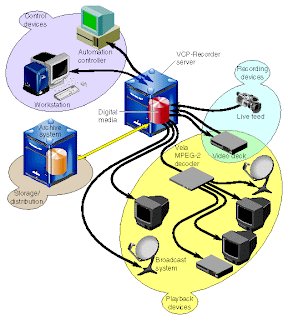
Computer Protocols- TCP/IP, POP, SMTP, HTTP, FTP and More
These are referred to as "protocols" and some of the more common ones such as TCP, IP, UDP, POP, SMTP, HTTP, and FTP are discussed here.
Standard methods of transmitting and processing various kinds of information are used and these methods are called "protocols". Protocols are established by international agreement and ensure that computers everywhere can talk to one another. There are a variety of protocols for different kinds of information and functions. This article will discuss some of the common protocols that the average PC user is likely to encounter.
TCP/IP
TCP (Transmission Control Protocol) and IP (Internet Protocol) are two different procedures that are often linked together. The linking of several protocols is common since the functions of different protocols can be complementary so that together they carry out some complete task In fact, the term "TCP/IP" is normally used to refer to a whole suite of protocols, each with different functions. This suite of protocols is what carries out the basic operations of the Web.
When information is sent over the Internet, it is generally broken up into smaller pieces or "packets".It is also a safety measure to minimize the chances of losing information in the transmission process. TCP is the means for creating the packets, putting them back together in the correct order at the end, and checking to make sure that no packets got lost in transmission.
Internet Protocol (IP) is the method used to route information to the proper address. Every computer on the Internet has to have it own unique address known as the IP address. Every packet sent will contain an IP address showing where it is supposed to go.
TCP/IP suite is User Datagram Protocol (UDP).This protocol is used together with IP when small amounts of information are involved. It is simpler than TCP and lacks the flow-control and error-recovery functions of TCP. Thus, it uses fewer system resources.
A different type of protocol is Internet Control Message Protocol (ICMP) . It defines a small number of messages used for diagnostic and management purposes.
Mail protocols
The most common protocol for sending mail is Simple Mail Transfer Protocol (SMTP). When configuring email clients such as Outlook Express, an Internet address for an SMTP server must be entered. The most common protocol for receiving mail is Post Office Protocol (POP). It is now in version 3 so it is called POP3.
A more powerful but less common protocol for reading mail is Interactive Mail Access Protocol (IMAP). This protocol allows for the reading of individual mailboxes at a single account and is more common in business environments. IMAP also uses TCP to manage the actual transmission of mail.email such as Yahoo.
Hypertext Transfer Protocol
Web pages are constructed according to a standard method called Hypertext Markup Language (HTML). An HTML page is transmitted over the Web in a standard way and format known as Hypertext Transfer Protocol (HTTP). This protocol uses TCP/IP to manage the Web transmission.
A related protocol is Hypertext Transfer Protocol over Secure Socket Layer (HTTPS), first introduced by Netscape. It provides for the transmission in encrypted form to provide security for sensitive data.
File Transfer Protocol
File Transfer Protocol (FTP) lives up to its name and provides a method for copying files over a network from one computer to another. More generally, it provides for some simple file management on the contents of a remote computer. It is an old protocol and is used less than it was before the Word Wide Web came along. Today, Its primary use is uploading files to a Web site. It can also be used for downloading from the Web but, more often than not, downloading is done via HTTP. Sites that have a lot of downloading (software sites, for example) will often have an FTP server to handle the traffic. If FTP is involved, the URL will have ftp: at the front.

No comments:
Post a Comment